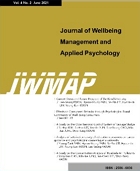- 권한신청
- E-ISSN2586-6036
- KCI
3권 4호
초록
Abstract
Purpose: This research, based on the tariff reduction table negotiated by South Korea and China free trade area, the specific tariffs of the two countries in the implementation of the Korea-China Free Trade Agreement are calculated, and the global equilibrium model, the global trade analysis project (GTAP) model, is used to simulate and analyze the impact of the Korea-China free trade area on the output and trade of the two countries. Research design, data and methodology: The study conducted a survey on 2018 year GTAP 9.0data. After empirically analyzing the data, we believe that the Major industry in Korea and China will maintain its growth momentum. Results: This study shows that under the assumption that the average tariff of China and South Korea at the beginning of FTA was reduced to 20%, two scenarios were simulated. Two scenarios are simulated under the assumption that the average tariff of China and South Korea FTA will be reduced to 10%. Conclusions: This paper assumes that the average tariff of China-Korea FTA is set at 20%, 10% and zero tariff respectively in the early, middle and long term of the FTA construction. It considers the impact of China-Japan-Korea FTA on China- Korea FTA.
초록
Abstract
Purpose: This study aims to explore the experience of cross-cultural communication adaptation between local and expatriate employees at PT. XX Organizational culture in the company is the most important factor to helpemployees in the company to work efficiently and effectively in order to achieve company goals. Research design, data and methodology: The analysis methods used in this research are data reduction, data presentation, and drawing a conclusion. From this collaboration, the cultural adaptations arouse due to the challenges for workers who have to work together with different cultural backgrounds. The method used is qualitative with a case study approach. Data collection methods used is employee interviews at PT. XX with triangulation conducted on 2 expatriates and 2 local employees. Results: Studies show that successful management is highly dependent on employees adapting to local culture and work situations. This process rarely runs smoothly because the persons in intercultural interaction do not use the same language and the lack of adaptation.. Conclusions: . In order to maintain its existence, the company strives to expand its wings in the global market and establish partnerships to expand cooperation. PT. XX from South Korea cooperated with Krakatau Steel, a state-owned Indonesian company
초록
Abstract
Purposes: This is a study on the perception of safety in use according to cosmetic information. Research design, data and methodology: As a result of analyzing 324 women in their twenties living in the metropolitan area, the following conclusions were drawn. Results: As a result of measuring the awareness of cosmetic information, the awareness of 'cosmetic-related knowledge' (M=3.52) and 'cosmetic performance' (M=3.43) was high, indicating that information on cosmetic knowledge was actively shared with each other. It was understood that the method of use and effect were properly recognized and that the cosmetics were selected. 'Correct cosmetic storage method' is significant in the factors of interest in cosmetics (p<.001), and 'the harmful ingredients of cosmetics that should be avoided' are significant in the factors of cosmetic information (p<0.05) and the factors of interest in cosmetics (p<0.01). 'Trouble-causing ingredients' showed a statistically significant difference in safety perception in all factors except cosmetic performance factors. Conclusion: There is a need to construct a system that allows consumers to easily purchase cosmetics that are necessary for their skin by schematically or simplifying the information on the usage period and trouble-causing ingredients after opening the cosmetics to be easily understood.














